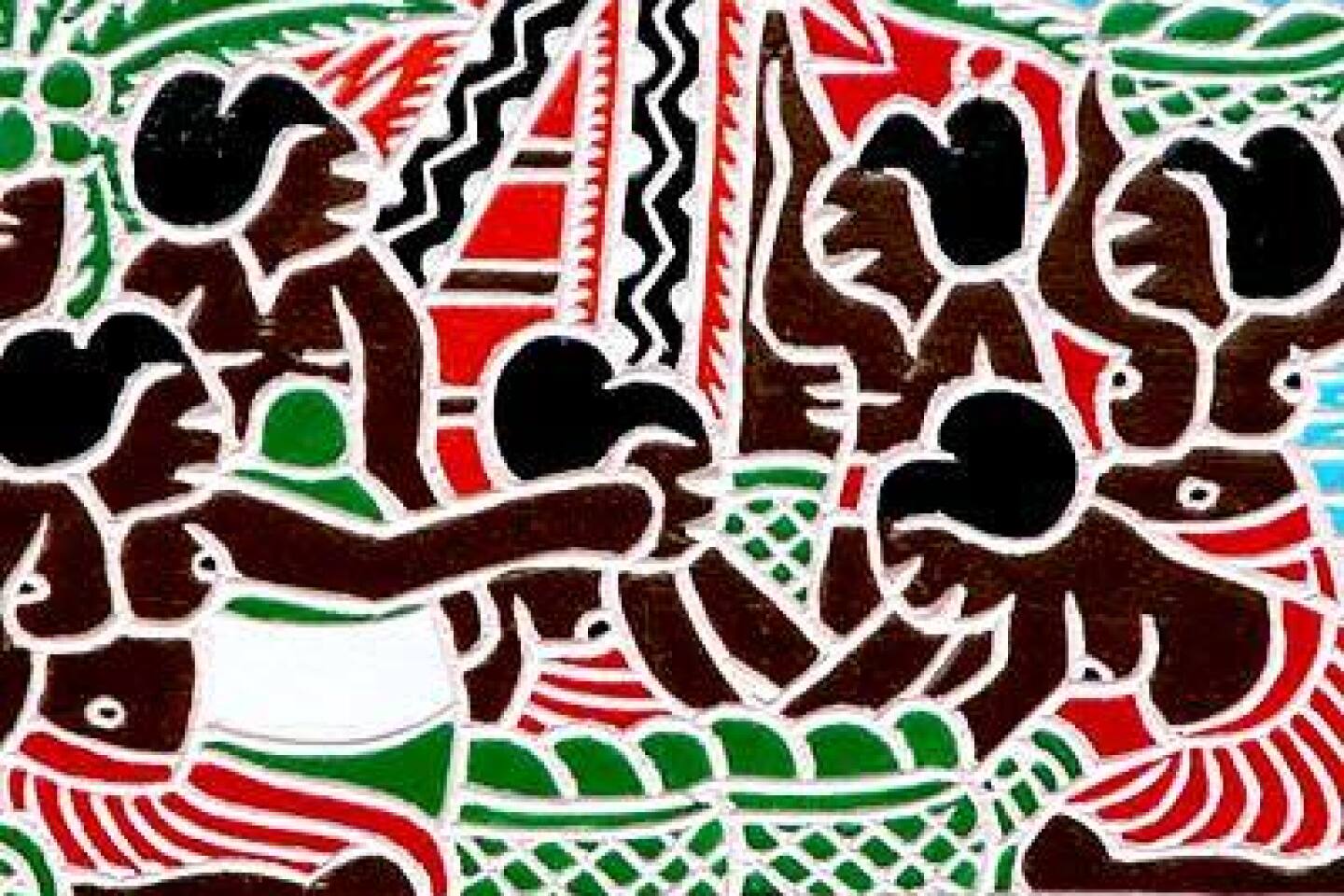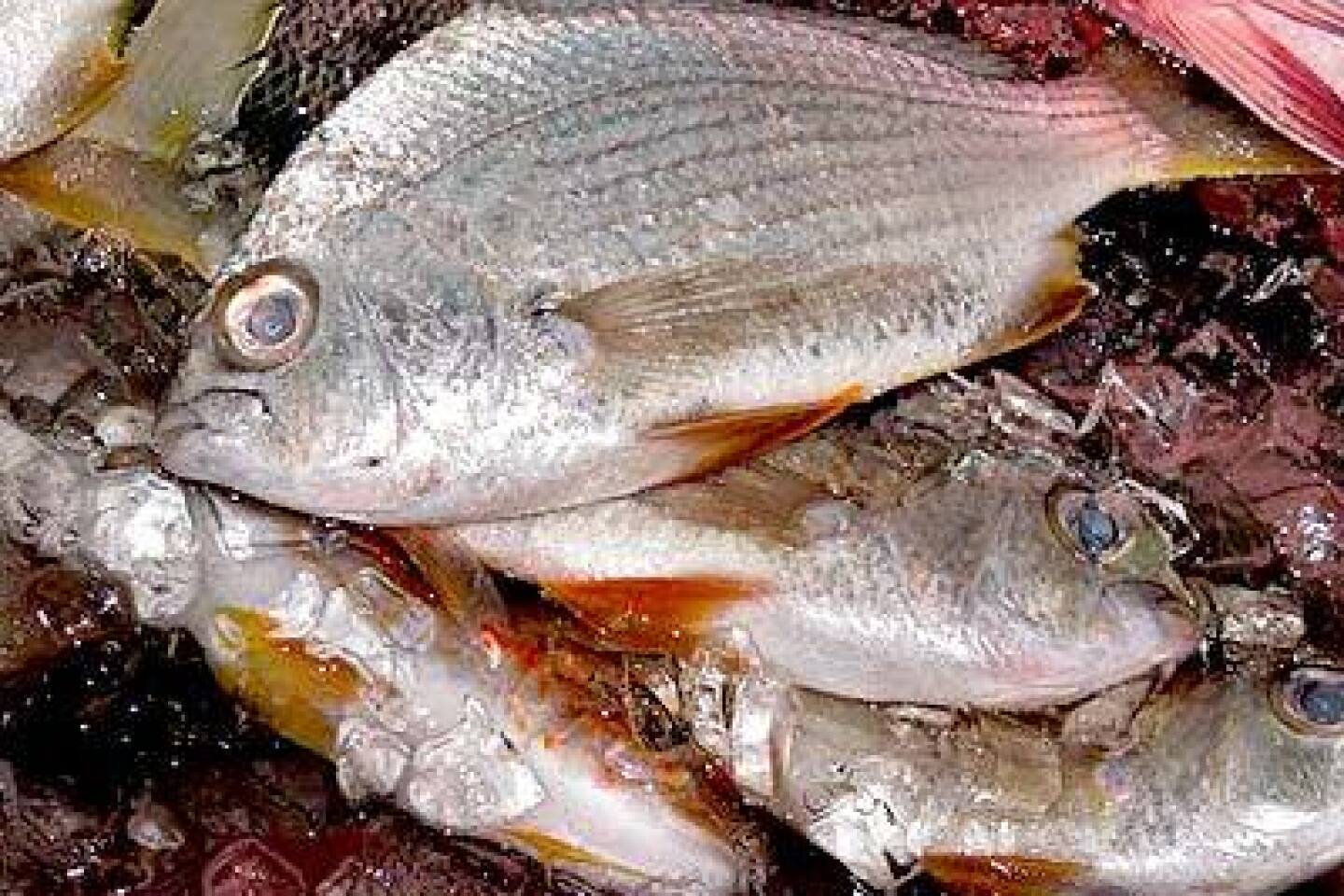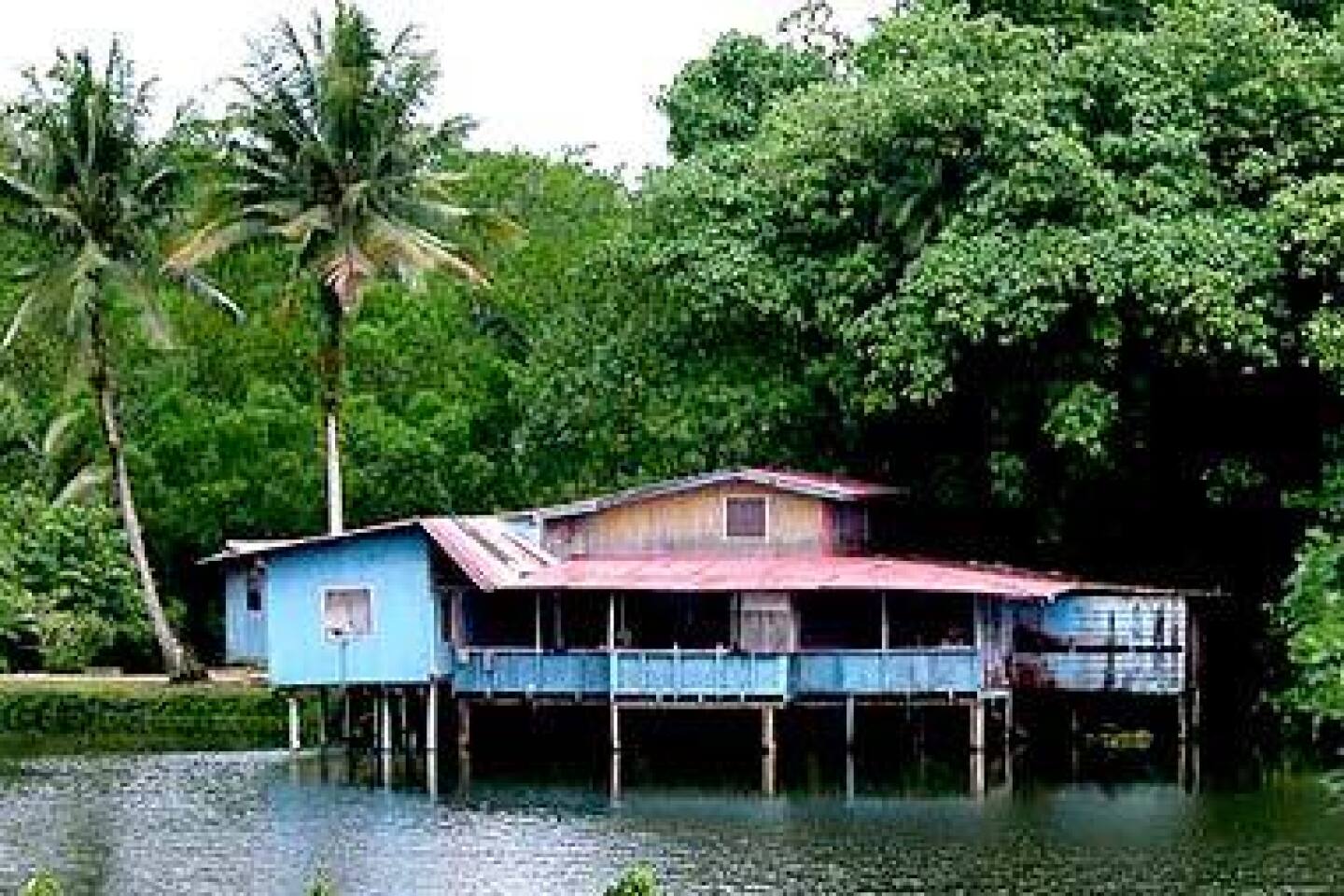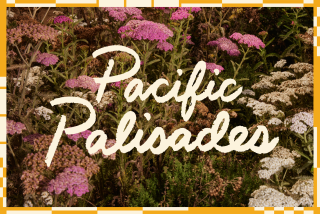PALAU
An underwater armada sailed by my dive mask, turned as if on cue and sailed by again — a dozen bright splashes of color sparkling in the calm, clear water. These yellow-tailed fusiliers were showing off for a clumsy human intruder, I thought, and I laughed.
Clumsy, indeed. I exploded to the surface coughing. I’d forgotten you can’t laugh underwater; I’m always so excited when I’m nose to nose with a school of fish that I overlook the limitations of having a snorkel clenched between my teeth.
The fusiliers and I were swimming in aquamarine water off the coast of Palau, a tiny Western Pacific nation that’s considered an underwater wonder of the world. Its turquoise seas are legendary with divers, some of whom view it as a mecca. But visitors don’t have to dive to appreciate Palau’s treasures; even an inexperienced snorkeler can glimpse a magical array of coral, fish and other colorful marine life. Those with simpler tastes — a beach chair and a sandy shoreline — can find long, white beaches on emerald-green, uninhabited islands.
Despite its popularity with divers — Jacques Cousteau was among its boosters — Palau is relatively undiscovered. It’s off the radar of most Americans, with fewer than 3,000 visiting last year. Only about 70,000 visitors arrived overall, the size of the weekend crowd at a U.S. theme park. The nation hopes to raise its visibility July 22-31, when the Pacific Islands Festival of the Arts is held here, drawing 27 nations and about 4,000 participants and guests.
For Americans, Palau offers more than tropical ambience and multihued fish. In a world of places where Yanks aren’t welcome, Palau is a gentle alternative. The island republic, once a U.N. Trust Territory administered by the U.S., is an uncomplicated destination. The currency is the U.S. dollar, visas are not required, and most residents speak English. Best of all, they seem to genuinely like American visitors.
“The friendliness of the people, the slow island style, the great diving, I love it all,” said Tina Summerlin of Charlotte, N.C., whose June trip to Palau was her second visit. “I’d eventually retire here if I thought I could talk my husband into it.”
A wealth of islands
The Palau archipelago, considered part of Micronesia, has more than 300 forested islands and atolls spread out over 325 miles of the Pacific Ocean and the Philippine Sea. Most visitors stay in Koror, the capital, and spend their time diving, snorkeling and kayaking in the blue waters surrounding Palau’s Rock Islands, lush green wedges of land that jut out of the sea to form a maze of channels teeming with marine life. Protected by a long barrier reef, the islands are surrounded by water so calm and clear that a boat in the distance seems to float on the sky.When I visited in mid-June — my 18-hour flight here was on Continental Micronesia via Hawaii and Guam — I wasted little time. Within a few hours, I was in a boat skimming through the water toward the Rock Islands with five other snorkelers.
Our first stop was an area called Clam City, where the mollusks grow as large as 4 feet at their widest point and as heavy as 500 pounds. The giant clams, the world’s largest, were resting on a sandy bottom in tranquil, 10-foot-deep water. Everyone joked about getting trapped inside one, but our guide, Jake Oiterong, quickly set us straight. “Impossible,” he said, laughing.
The giant clams are among many species that can be seen only in Palau. The islands lie astride two of the world’s deepest ocean channels, the Palau Trench and the Philippine Deep. Their fathomless depths have helped create an unmatched marine environment that’s home to 1,400 species of fish and hundreds of species of coral. The diversity makes snorkeling or diving enticing; water temperatures of 80 to 86 degrees make it comfortable.
We saw snappers and wrasses, cuttlefish and gobies, sea stars and soft corals as our boat motored through the huge lagoon that encompasses the Rock Islands, stopping at underwater attractions. At one point, we peered down at a submerged Japanese Zero aircraft that crashed in 1944 during a World War II battle. The pilot swam to shore uninjured, Jake said.
Palau was a major battle site during the war, and its lagoon is a silent harbor for dozens of ships that sank during fierce fighting. Planes, armaments and tanks can be seen on the land and in the water. Peleliu Island, 23 miles southwest of Koror, was the scene of one of the bloodiest battles, with thousands of casualties.
Now an independent nation of about 20,000 residents, Palau weathered several colonial periods: Spain, Germany, Japan and the U.S. all left their mark in one way or another. Palau’s government buildings, currently in Koror, were built by the Japanese before World War II. They’re timeworn, like most of the buildings and roads in the tiny capital. There are 23 miles of paved roads and two stoplights, although they don’t work. (They caused more congestion than they prevented, residents say.)
There are restaurants and bars, hotels and small shops, but many Palauans seem to agree with resident Miriam Chin: “The beauty of our nation is in our waters, not in our town.”
Land also delights
There also is beauty in the land, where rain forests, jungles and mangrove forests form a nearly impenetrable labyrinth of greenery.The island of Babeldaob, north of Koror, is one of the largest landmasses in the region, second only to Guam. A combination of thick rain forests, rolling hills, sandy white beaches and picturesque villages, Babeldaob bursts with natural wonders. But, like most of Palau, it is isolated. A new road promises to make visits there simpler, but until it is finished — and no one wants to guess when that will be — only jolting four-wheel-drive tours are possible.
Palauan friends told me the road was much better than it used to be. Still, we jerked and bounced over the unpaved, single-lane track for eight hours to make a 50-mile round-trip journey, sliding off into a muddy ditch at one point. Luckily, a dump-truck driver needed to get by our Toyota 4Runner. His only recourse was to yank us out.
But our rollicking trip — from Koror to the tip of Babeldaob — was well worth the effort.
We saw mysterious carved stone faces, reminiscent of Easter Island’s stone carvings, and giant monoliths, the largest nearly 10 feet tall. A group of six carved stones and 31 monoliths sat on a wind-swept plateau overlooking the Philippine Sea, strange, moss-covered faces staring mutely into space.
In the last decade, when the new road began cutting into Babeldaob, archeologists found evidence of ancient burials and advanced construction of large, terraced, man-made mounds. Primitive inhabitants created terraces, dating to 200 BC, on more than 20% of the island, said Rita Olsudong, an archeologist with the Palau Historic Preservation Office. Our trip took us by some of the mounds, where we found clay pottery shards underfoot.
“The technology is impressive,” Olsudong said. “Using only ancient tools, these communities were able to construct terraces and stone features still standing today.”
Although much of the distant history of the country is lost in time, there is a strong oral tradition, with legends of tortoises, spiders and mermaids passed from generation to generation. Carved wooden storyboards, a popular souvenir, relate the tales. These are available at the few gift shops here, but one of the largest stashes can be found at the Koror jail, where prisoners whittle and carve them for cash.
I wandered in with some friends one steamy afternoon. The overcrowded jail smelled, well, like a jail on a hot day. But there were dozens of storyboards to choose from, some as tall as 4 feet. My favorite depicted a village full of people and an ocean full of fish, tortoises and leaping marlins. It was a foot tall, 2 feet long and carved from mahogany. It was marked $130, but I was told the prisoners often allowed the items to be sold for less. I glanced at the name carved on the back of the plaque.
“Would Oscar take less?” I asked.
The attendant went through a side door and reappeared a few minutes later.
“He said $100.”
I bought the piece along with a book of Palauan legends.
“Why’s Oscar in jail?” I asked.
“Drug trafficking.”
Crime is uncommon in Palau, where strong gun laws and community pressure limit lawbreaking. But the per-capita income is about $10,000 a year, and some people in remote areas cultivate marijuana to supplement their income, I was told.
We left the jail, and I moved on to other attractions. Rain had started — the official rainy season is late June to November — and winds were churning the waters near the Rock Islands. I’d have to swim with the fish another day.
Environmental education
But there were museums to see. The nation’s main facility, the Belau National Museum, will relocate to a new building before the Festival of the Arts. I toured the current facility and saw historical and cultural artifacts. Nearby was a thatched-roof bai, or traditional men’s meeting house, where chiefs gather to discuss issues and make laws.Also on my itinerary was the Etpison Museum, a nicely organized collection of Palauan artifacts and historical photos; and the Palau International Coral Reef Center, where I walked through a mock-up of the country’s coral reef ecosystem. I learned about saltwater crocodiles, rabbit fish, jellyfish and a host of small, colorful reef fish, such as butterflyfish and clownfish. The center has a research wing that focuses on helping the country preserve its environment and culture.
Palau aggressively protects its resources, particularly marine resources. Twice in the last year, Palau President Tommy Remengesau Jr. has set fire to gasoline-doused piles of shark fins seized from foreign fishermen. The message: Palau’s sharks are off-limits. Conservationists say sharks are “finned” on the high seas and their bodies are dumped back in the water, often while the fish is still alive. (The finless shark bleeds to death, drowns or is eaten by another.) The fins are used in shark fin soup, a popular Asian dish.
Environmental issues are debated in bars, restaurants and neighborhood gatherings as the community struggles with the fine line of promoting tourism and protecting the environment. Palau is the only place I’ve ever visited where I’ve heard the term “sustainable tourism” outside of a government office.
The result is clean water, clean shores and no major development in the Rock Islands. A particularly beautiful region, called the Seventy Islands Wildlife Preserve, has white beaches, inviting coves and a maze of turquoise waterways. But it can be viewed only from the air. Its sandy shores are the natural habitat for egg-laying sea turtles; boats are banned.
The Palauans’ respect for the environment was evident throughout my snorkeling adventures. Trash was collected before it had a chance to blow overboard, and tourists were cautioned not to touch the coral or the fish.
It was an easy rule to follow until we reached Jellyfish Lake. Everyone says the lake offers a once-in-a-lifetime chance to swim with jellyfish — without getting stung by their trailing tentacles.
The marine lake is atop a limestone island near Koror. Visitors must climb through the jungle up a hill so steep that thick ropes have been strung along the rocky pathway to help them to avoid falling. Dense vegetation keeps the sun from reaching the ground; tales of poisonous trees and saltwater crocodiles made the walk more interesting.
Once at the lake, there was sun — and jellyfish by the thousands. Cut off from the main lagoon and predators, the mastigias jellyfish evolved without the ability to sting. They follow the sun during the day, moving with it across the lake. When we arrived, they were only about 20 feet from the shoreline.
We’d been told not to wear flippers, which could rip the fragile jellyfish apart, and to avoid harming them.
I looked at the deep, murky water, at the thousands of bobbing, throbbing, undulating jellyfish and wondered whether I was up to this undertaking. Hmm, I thought. Undertaking. Poor choice of word.
OK, I thought, I’ve come this far. I slid off the wooden dock and floated toward the jellyfish, trying hard not to actually get near them. No such luck. They oozed through the water toward me. Some were as large as a fist, others as small as a pinhead. They began bouncing and rolling against my body.
I didn’t touch. I didn’t scream. I didn’t flail.
But I didn’t hang around long either.
“So, what did you think?” another snorkeler asked as I popped onto the dock, gasping.
“It’s a once-in-a-lifetime thing,” I answered, “just like everyone says.”
*
(BEGIN TEXT OF INFOBOX)
Exploring a water world
GETTING THERE:
From LAX, connecting service (change of planes) to Koror, Palau, is offered on Eva, Malaysian, Korean, China, Cathay Pacific and Continental airlines. Restricted round-trip fares begin at $970.
TELEPHONES:
To call the numbers below from the U.S., dial 011 (the international dialing code) 680 (the country code for Palau) 488 (the regional code) and the number.
WHERE TO STAY:
Palau Pacific Resort, P.O. Box 308, Koror, Republic of Palau 96940 Micronesia; 2600, https://www.palau.panpacific.com . This is the only real resort in Palau. Accommodations are roomy, well tended, air conditioned and comfortable, and many have ocean views. Pool, dining room and bar, activities, landscaped grounds, sandy beach with good snorkeling from shore. Doubles from $190.
Carolines Resort, P.O. Box 399, Koror 96940; 3754 or 3755, https://www.carolinesresort.com . These air-conditioned hillside bungalows are especially nice for honeymooners and others seeking an away-from-it-all vacation. Beautiful sunsets from the balcony. Guests can use the pool and other resort facilities at Palau Pacific Resort, a five-minute bus ride. Doubles from $160.
Penthouse Hotel, P.O. Box 6013, Koror 96940; 1941, e-mail: the-penthouse@palaunet.com. This may be the best deal in the country. The pluses: Large, air-conditioned rooms, good local-fare restaurant. The minuses: Ugly downtown location, no lobby. Doubles $75.90.
WHERE TO EAT:
The Taj Palau, Main Road, Koror, across from the National Congress; 2227. Nice variety of Indian food. Entrees from $10.
The Longshoreman, Malakal Island Main Road; 2616. Local and seafood specialties, sandwiches. Entrees from $6.
Kramers Cafe, off the Malakal Main Road, behind the Shell distribution plant; 8448. Many U.S. ex-pats frequent this small restaurant overlooking the water. Salads, sandwiches from $8.
WATER SPORTS:
Sam’s Tours, P.O. Box 7076, Koror; 1062 or https://www.samstours.com . Dive shop also offers kayaking and snorkeling in the Rock Islands, land tours to Babeldaob. All-day snorkeling trip, including lunch and beverages, $85.
Fish and Fins, P.O. Box 142, Koror; 2637, https://www.fishnfins.com . Dive and kayak tours. Weeklong live-aboard and charter cruises available. Snorkeling trips available for groups.
TO LEARN MORE:
Palau Visitors Authority, P.O. Box 256, Koror 96940; 2793 or visit
— Rosemary McClure
More to Read
Sign up for The Wild
We’ll help you find the best places to hike, bike and run, as well as the perfect silent spots for meditation and yoga.
You may occasionally receive promotional content from the Los Angeles Times.









